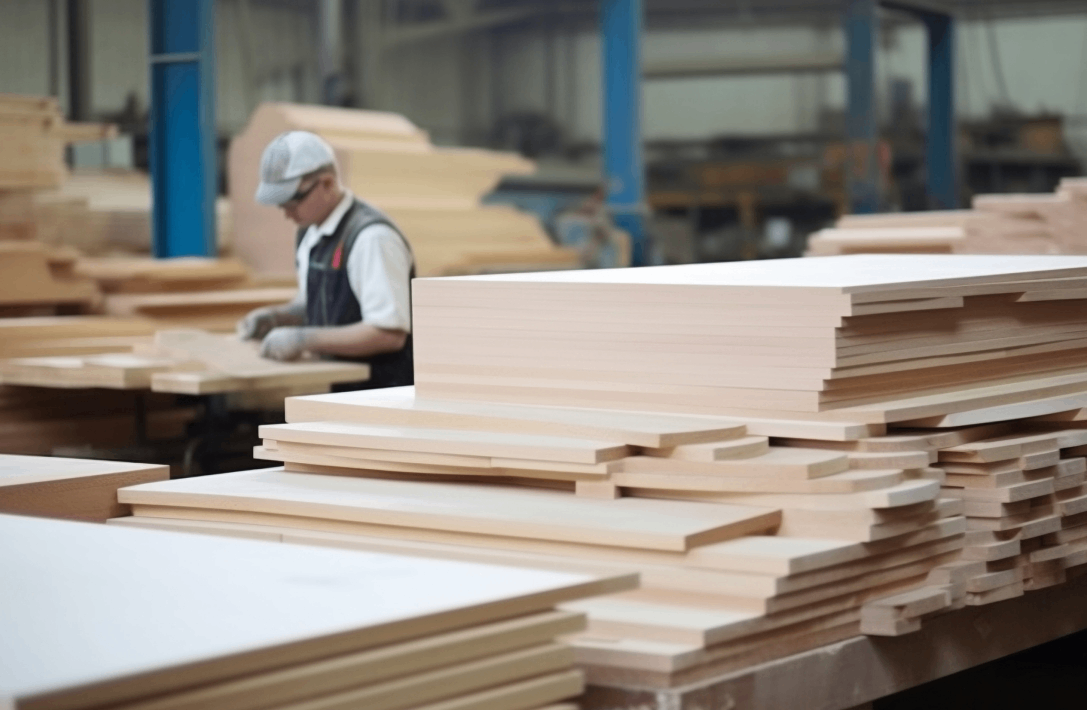In the global wood processing industry, plywood, as an important type of wood-based panel, has always played a crucial role. In recent years, the performance of Chinese wood panels in the international market has drawn much attention, and their export prospects are full of both opportunities and challenges.
Image Source:699pic
From the perspective of export data, Chinese wood panels have achieved remarkable results in the international market. In 2024, the export volume of China's wood panel products was 13.1887 million cubic meters, representing a year-on-year increase of 22.82%, and the export value was $5.269 billion, with a year-on-year growth of 9.4%. From January to October 2024, the export volume of plywood reached 10.776 million cubic meters, a year-on-year increase of 23%. In traditional markets, the Philippines, as a major market, had an export volume of 815,000 cubic meters, with a 3% growth. Although the growth rate is not significant, the steady growth trend indicates the continuous and stable demand for Chinese wood panels. In emerging markets, the export volume to Vietnam increased by 73% to 45,000 cubic meters, and that to the United Arab Emirates increased by 36% to 615,000 cubic meters. The rapid growth of these emerging markets has opened up broader market space for the Chinese wood panel industry. In European, American, and other markets, the markets of the United Kingdom, Saudi Arabia, Australia, Mexico, etc. grew by 14%, 42%, 21%, and 12% respectively, showing that Chinese wood panels have won widespread recognition globally. Although the export volumes to some markets such as Japan and Nigeria decreased by 3% and 11% respectively, overall, the export growth of Chinese wood panels is significant, demonstrating strong market vitality and the effectiveness of a diversified market layout.
With the development of the global economy, the demand for plywood in industries such as construction and furniture manufacturing continues to grow. In emerging economies, the acceleration of the urbanization process has promoted the prosperity of infrastructure construction and the real estate market, which undoubtedly creates huge market space for the export of wood panels. For example, many countries in regions such as Southeast Asia and Africa are vigorously promoting urbanization construction, and there is a strong demand for building materials like plywood. Chinese wood panels have relatively strong competitiveness in these markets due to their reasonable prices and stable quality.
In addition, with the increasing global attention to environmental protection and sustainable development, the requirements for environmental protection standards in the production process of wood panels and the legality of wood sources are becoming more and more stringent. This requires Chinese wood panel enterprises to not only focus on product quality but also ensure the sustainable supply of raw materials and the environmental compliance of the production process.
From the perspective of the domestic industry situation, by the end of 2024, there were more than 6,020 production enterprises of wood panel products nationwide, with a total production capacity of approximately 221 million cubic meters per year, an increase of 7.8% compared to the end of 2023. The industry shows a trend of a decrease in the number of enterprises, an increase in total production capacity, and a continuous growth in the average production capacity of enterprises. At present, the overall supply capacity of the Chinese plywood industry exceeds the consumer demand, which also prompts enterprises to actively expand overseas markets. However, it may also lead to intensified competition in the export market.
Looking ahead, for the export of Chinese wood panels to achieve sustainable development, enterprises need to continuously improve product quality and technological content, strengthen brand building, increase product added value, and get rid of the dilemma of low-price competition. At the same time, they should actively explore emerging markets, reduce dependence on a single market, and diversify trade risks. The government should also strengthen trade negotiations and communication with other countries and regions, create a favorable trade environment for enterprises, and support enterprises in dealing with trade frictions.

